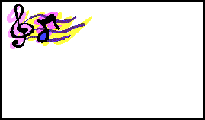Changing The Bass Notes (part 3)
Apr 16th, 2008 by admin
When you can see a pattern in the bass notes, you can then recognize a chord progression (or a pattern of chords) a whole lot easier.
For example, the chords on the right hand in the sample progression in my previous post (“Changing The Bass Notes (part 2)”) may seem rather random, but the bass notes reveal a pattern of walking down the scale, i.e., 1 (doe), 7 (ti), 6 (la), 5 (so), 4 (fa), 3 (me), 2 (re).
In fact, the easier way to recognize a chord pattern is by recognizing the bass note pattern.
To play freely by focussing on bass notes, however, you have to know which chords to accompany each bass note, and be familiar with their association.
Rule number 1: In general, use Chord I to accompany bass note 1 (do), Chord IV to accompany bass note 4 (fa), and Chord V to accompany bass note 5 (so). That’s easy enough. ![]()
Rule number 2: For the 2 (re), 3 (me), and 6 (la) bass notes, try accompanying them with Chord IV, V, and I respectively. That gives you the 3 minor chords.
Rule #2 applies only when the sound you are to produce is a minor chord, i.e., if you see on your music sheet that the chords are 2nd, 3rd or 6th minor chords. In the key of C, that means, Dm, Em and Am chords.
Rule number 3: If Rule #2 doesn’t apply, then try Chord I for bass note 3 (me), Chord IV for bass note 6 (la), and Chord V for bass note 7 (ti),
Usually such chords are indicated on the music sheet, e.g., in the C key, they would look like C/E, F/A and G/B respectively.
Rule number 4: If applying Rule #3 still does not get you the sound you want, then you are very likely looking for the Major chords of II, III and VI. In the C key, that means D major chord, E major chord, and A major chord, for the 2 (re), 3 (me) and 6 (la) bass notes respectively. Now, that is a bit of a leap for those of us who want to learn piano the cheat way. So, I will cover that much later. Anyway, not to worry, because… (please allow me to repeat)… a lot of songs can be played with just the 3 basic chords. ![]()
As for now, there are still some tweaking we can do with the 3 basic chords that I should cover first. These include suspension and superimposition, just to sound sophisticated with the names. ![]() Anyway, to conclude the 3-part series on “Changing The Bass Notes”, let me show you something interesting…
Anyway, to conclude the 3-part series on “Changing The Bass Notes”, let me show you something interesting…
Let’s bring back the progression earlier… (from part 2):
I –> V/7 –> VI m –> I/5 –> IV –> I/3 –> II m –> IV/5
… and tweak it slightly to become this…
I –> V/7 –> VI m –> -I/5 –> IV –> I/3 –> II m –> IV/5
We have tweaked the 4th chord (marked red) in the series above to become Chord –I over the 5th bass note (so). Try playing it. How do you like the sound?
Now try the following shortened version of the above progression with the song “As The Deer”…
I –> V/7 –> VI m –> -I/5 –> IV –> IV/5 –> I
In the key of C, it would look like this:
C –> G/B –> Am –> Bb/G –> F –> F/G –> C
And not to forget the ‘Am’ may be substituted by ‘C/A’ (refer to the theory in ‘The 3 Minor Chords’ post).
Here is the video illustration…
Note: In the video, my left hand started from a C note that is very near to my right hand. This is solely for the purpose of the video shooting. If I were to play my bass notes one octave lower, then I would have to move the camera further in order to capture both of my hands on the screen. For your own practice, please do play the bass notes one octave lower.






[...] important thing you should take note of in the above progression is the way that the bass notes progress, i.e., they go like [...]
I want to ask you
I –> V/7 –> VI m –> -I/5 –> IV –> IV/5 –> I
In the key of C, it would look like this:
C –> G/B –> Am –> Bb/G –> F –> F/G –> C
I understand your minus 1 Chord.
Can you explain the resulted chord Bb/G as the bass, what chord is this, Bb with what extensions?
And how does Bb chord go to F chord using the Circle of 5th?
Should it not be F chord going to Bb instead
Hi, that’s a good question!
The -I chord usually replaces Chord I, or more correctly Chord I7.
Usually, for a progression like the one I used as an example above, that chord would be played as a C7. And that is the place where I suggested a Bb chord instead.
That Bb chord in fact is itself an extension of C, i.e., C11. The notes for C11 are C-E-G-Bb-D-F, i.e., Bb note being the 7th, D being the 9th and F being the 11th note. To split the 6 notes into 2 chords, you get a Bb chord over a C chord, i.e., Bb/C, or C11…!
In short, C11 can usually substitute C7 quite well.
Therefore, to the more theory-concerned ones, the -I/5 in the above progression should strictly be called I11/5, or in the C key, C11/G.
Concerning “the Circle of 5th”, it should be clear then that we aren’t going from Bb to F, but actually C11 to F.
I hope this answers your question.
Thank you for the comment.
THANKS.
That explains everything — LOUD and CLEAR.
That’s what I thought you did — going from C13 to F. But when I saw Bb/G, I got thrown off.
Also I see why you put G bass there and then going down to F bass. It makes it sound good.
What do you think of the following thinking?
C –> G/B –> Am –> Gm7 –> F –> F/G –> C
That will make the chord progression stand out distinctively?
But I am interested in your thinking of minus 1 Chord and see how to incorporate them easily on the song. Do you have other songs to show us using the magic minus 1 Chord theory?
That Gm7 you have there is exactly the same as Bb/G, so it should work. Try them out!
Try them out!
Yes, I think in my list of songs (See http://playpiano.wordpress.com/index-for-songs/), there should be quite a number that make use of Minus-1.
In general, you can substitute the 7th chord with it. It usually sounds good to put a minus-1 between Chord I and Chord IV.
You can also use minus-1 with these 3 bass notes: 1 (doe), 3 (me) and 5 (so)… no prize for guessing them right!
The Bb/G (or your Gm7) we talked about earlier is indeed a Minus-1 over the “so” (5) note.
So when you go from Chord I to minus I chord (with either 1 3 or 5 bass), do you think in minus I (Bb)
or
do you think in I 13
or
do you think in change of key to Gm C7 to F?
I want to understand the advantage of thinking in minus 1 chord.
Whereelse would you add minus 1 chord in a chord progression other than from I to IV
You can tell I am interested in your cheat way.
Thank you for your interest!
To answer your first question, I think in terms of “minus 1″.
The reason is, I13 can be tricky in different keys, especially if you aren’t familiar with that key… imagine having to count up to 13…! But “minus 1″ is easy! Say, if I were in the key of Ab. I would be able to tell that Minus One is Gb straightaway. In other words, it’s easier and faster (to me, anyway) to figure out a simple chord nearer to Chord I than to work out a complicated derivative of Chord I itself, may it be I7, I11, or I13.
“Where else other than from I to IV?”
I have tried it also on the “so” (5) bass note, between VIm and IV chords, e.g., in the progression walking the bass note down “1, 7, 6, 5, 4,…”. That is, instead of playing VIm/5, you can produce quite a different sound by playing -I/5.
Why between VIm and IV? Because to me, Chord VIm is just another form of Chord I, i.e., I/6 (strictly speaking, that is VIm7).
It has been fun discussing all these with you.
Me too. I enjoy this discussion very much.
OK, I buy that minus 1 thinking because it is faster.
To clarify in key of C:
The minus 1 is actually C13.
The bass note can be G or C or even E I suppose?
For VIm to IV, I understand vi can sub for I.
So in key of C:
C Am G F…..
actually we do that a lot
but never notice it, from Am to G.
But now, if I think in minus 1, do I then actually play:
C Am Bb/G F ?
This is very interesting.
Can you do that to As the deer? Or where would you do it?
“YES” to all your questions! You’ve got it!! Yeah!!!
For “As the deer”, that’s exactly what I do. I am sure you hv seen the video on this post. However, in my progression I put in a G/B between C and Am. That is the only bit different from your progression.
One more thing you may want to try is to alternate the Bb and C chords while keeping the bass note on G. That is, instead of just playing Bb/G at the line “water so my” (I’m referring to ‘As The Deer’, i.e., “As the deer panteth for the water so my soul…”), you can play Bb/G for “wa-”, C/G for “-ter”, Bb/G again for “so”, then C/G for “my”.
Cheers!
Cheers Ley Hymes!!!!
I got it! I like the alternating Bb/G.
For that Bb/G, I use the G as the bass note.
I never really hit the C root tone to let everyone know that this is in fact a C 13 chord.
But in actual fact it is functioning as a C 13 chord right?
Actually I see that we are doing a Gm.
But then in your alternating Gm and C7, it woks perfect to go to IV chord –it becomes a change of key?
Am I on target?
Yes! I would consider it a C13 still, except with a different bass. Actually, to me, it’s a matter of preference whether one calls that a Gm, Bb or C13. It’s more important for me: to use it at suitable places, to be able to recognize it by hearing, and to be able to play it on any key quickly.
I wouldn’t call that “change of key” as we are only moving to Chord IV, i.e., to the F chord, rather than to the F key. However, chord-wise, one would play exactly the same thing (the alternate chords) for a change of key to F, though usually with the C bass note. In other words, yeah….. I guess you can call it “change of key” if you want to. Haha!
You must be able to tell by now that I am not very good at sticking to conventional theories/rules. :b Perhaps there are actually theories that can explain this in a more politically correct manner, but my guess is they would be too sophisticated for me.
It’s ok. Not to worry. We don’t need to stick to conventional theories.
We need to know what works.
I really like that moving back and forth of Gm and C7 there and that’s what made me thought of change of key. But in fact it is really C13 but with a G bass.
Do you have unconventional thinking that lets us play in a practical way? I am only interested in playing but still it is good to understand a bit of theory behind it. (In case, someone else asks, then I can sound learned, Ha Ha).
You have been playing for 30 years, do you teach?
And any other places where minus 1 chord can fit? Probably not, eh?
I consider my playing over 30 years from the time I started learning in the primary school. Haha! Yes, I have taught some friends, just for fun really. I have no student at the moment.
I started sharing on the net because I feel that I could simplify piano-playing quite a bit, especially for adult learners. I find what we usually learn through the conventional classes are not very helpful for those who just want to learn quickly to play and sing along, like the way they can with a guitar.
Regarding minus-1, I don’t know of any place where it can be used yet. But that’s only according to my limited experience. If you discover a nice place to use it, please let me know!
Concerning your question: “..unconventional thinking that lets us play in a practical way?..”, I have posted a few videos lately that greatly simplify the playing of certain songs. I’m not sure if that answer your questions. But please check them out on my blog. The examples are: “I Could Sing Of Your Love Forever”, “Amazing Grace”, and Marie Digby’s “Stupid For You”.
p/s Sorry for the late reply. I am traveling, and it is not convenient to go online at times.
Thanks for replying while you are travelling. Better leave you alone. I’l ll explore your other cheat tricks and videos. I have not seen all of them yet.
If I discover where minus 1 chord fits in a song, I will let you know.
Happy traveling!
[...] of the progressions) is a good example of one with the bass notes walking down the scale. See “Changing The Bass Notes (part 3)” under the “Cheat Tricks” [...]
Hi Les,
Could you explain what a ‘minus I‘ is supposed to mean ? I don’t think it was explained anywhere in the page when you introduced the term ‘minus’.
Hi, thank you for highlighting this. I noticed that on the “Table Of Contents”, there is not hyperlink for “The Minus-One Chord”. I have fixed that. On “Changing The Bass Notes (part 3)” page, the link is there though. Anyway, in case you can’t find the page, you can click on this link here: http://pianocheats.com/pianocheats/?p=32 That is, a “minus-1″ in a C key would actually be C11 (that is only if C11 means anything to you).
That is, a “minus-1″ in a C key would actually be C11 (that is only if C11 means anything to you).
Minus-1 is in conventional therm an 11th chord, I think.
Les